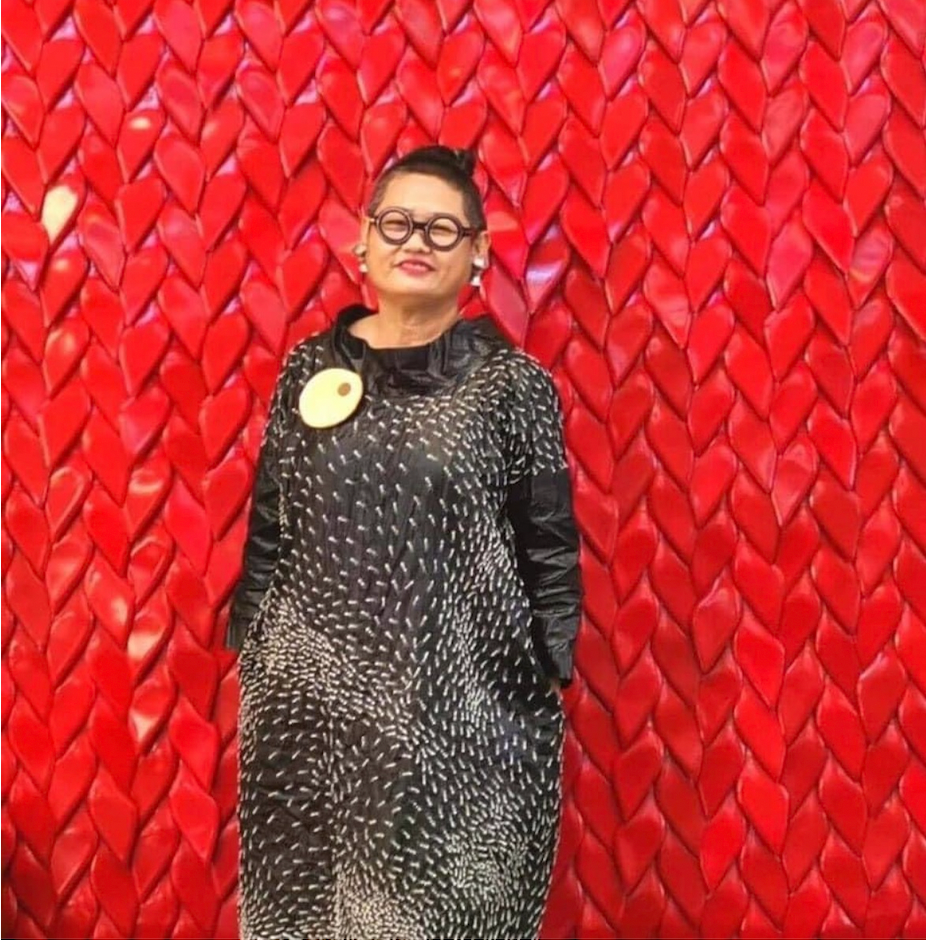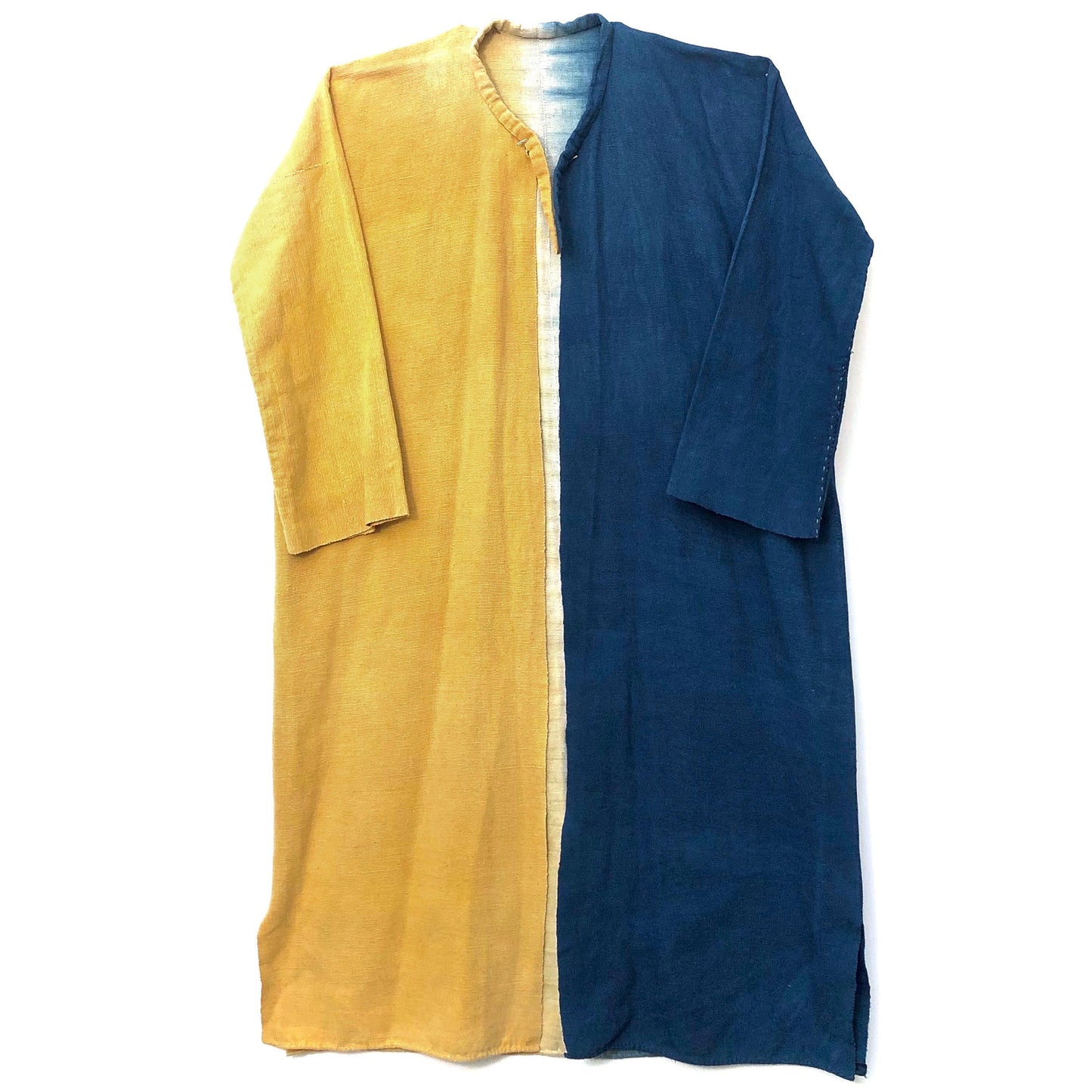Thailand, Chinalai Modern / Somporn Intaraprayong, Embroidery
The textiles of Somporn Intaraprayong take us on a walk through the rice fields. Heavy stitches through hemp create an undulating surface, reminiscent of a rhythmic landscape, shaped by paths and contours of thread. Organic rows of stitches create maps, like enlarged cellular drawings or currents in an indigo ocean, with hidden clues to the place and people that created them. Embroidered spider webs, picnicking ants or numbers from a child’s maths book all give a sense of rural life in Thailand and tell the stories of the local seamstresses that work under Somporn’s guidance.
As we look closer the textural terrain reveals slubs of raw cotton, splitting hemp fibres and the uneven stitches of a human hand. Somporn’s work is locally produced. It begins with found or cultivated fibres such as cotton, hemp or linen then dyed using local indigo plants, abundant in the hills of Northern Thailand. Somporn describes how the work begins; ‘Every tiny piece of cloth has a long history. In the case of cotton, for example, the plant had to be foraged or cultivated, picked, spun, and then dyed and woven, or woven and dyed – all this before the cloth is turned into something else. To throw out even a scrap of material, therefore, is painful, so we keep everything.’ This understanding of how the cloth is made has lead to a deep appreciation for the irregularities of natural fibres, which are celebrated through her textiles.
Next, the raw cloth is stitched by many hands. Local women are taught how to become seamstresses to create densely stitched pieces that are sold at the best international craft markets. Somporn dedicates a lot of her time to sharing her sewing skills with anyone who wants to learn, creating work in areas where employment is scarce. There is a beauty that radiates through Somporn’s entire creative practice from the raw materials to the final stitch. She describes empathy as the most valuable tool in her process, which has encouraged her to reach out to those who may be struggling with poverty or lack of education.
Somporn is a self-taught artist, whose embroidered textiles are now coveted by collectors around the world. An influential moment in her professional development was meeting Vichai Chinalai of Chinalai Tribal Antiques, whist working selling jewellery in Bangkok. With an instinctive trust and shared passion for Thai handicraft, the pair began sharing sources and collecting unique and rare textiles. Together they have exhibited eight times at the Sante Fe Folk Art Market and have gained an enthusiastic following.
Share

































































